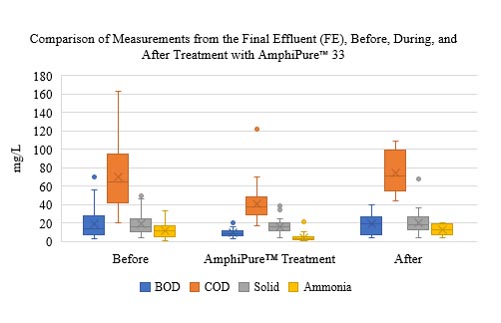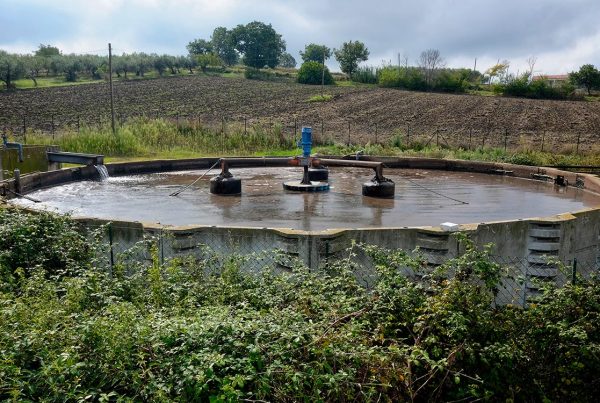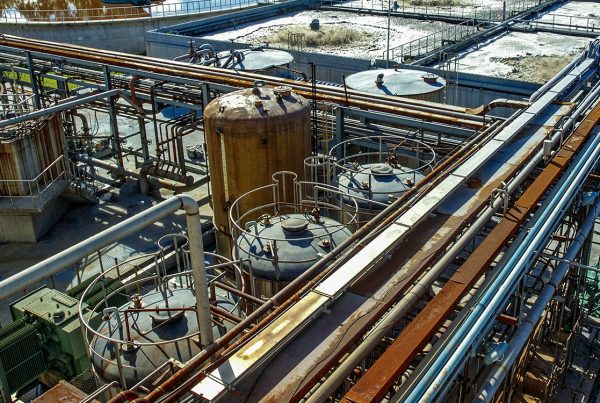Introduction
The site, J36, is a small market town situated on the edge of the Yorkshire Dales National Park, with a growing tourist trade. The waste water treatment works (WwTW) site complained of ammonia rising above consent, and a Biocube unit was installed. AmphiPure™ 33 powder is dosed into the BioCube, and incubated with raw influent, before being pumped into the primary settlement tanks (PSTs). This process was paused, and measurements taken without treatment, to ascertain whether the AmphiPure™ truly had an impact.
Box and whisker plots are used to show the range and distribution of data, by splitting into quartiles, highlighting the mean, median, and outliers. Outside of the box are “whiskers”, which indicate variability outside the upper and lower quartiles. Points outside of these lines are considered outliers.
Results
Data was split into groups: Before treatment, during treatment, and after treatment. The box and whisker plot below shows this. There is an obvious rise in COD when treatment is paused, which is also observed in the other parameters. Further statistical analysis showed that there was higher variance in untreated samples compared with treated, and a significant difference in the mean of each measurement (p ≤ 0.001) at the final effluent.
 In addition, measurements of the flow through the works were obtained and compared to the chemical analyses, to identify a conceivable relationship. A positive correlation is observed between all of the chemical measurements, at each stage of the works. A negative correlation is observed between the flow rate and the chemical measurements, which is very strong to moderate. This helps explain the outlying results, particularly the anomalous COD measurement taken during treatment, which were taken on days with flow rates lower than the average.
In addition, measurements of the flow through the works were obtained and compared to the chemical analyses, to identify a conceivable relationship. A positive correlation is observed between all of the chemical measurements, at each stage of the works. A negative correlation is observed between the flow rate and the chemical measurements, which is very strong to moderate. This helps explain the outlying results, particularly the anomalous COD measurement taken during treatment, which were taken on days with flow rates lower than the average.
Conclusions
The treatment with AmphiPure™ 33 reduces BOD, COD, suspended solids, and ammonia in PSTs and FE, when directly compared to periods of no treatment. This is particularly interesting after the treatment was paused, where an obvious spike in COD and ammonia levels are observed.
The measurements taken from the final effluent during treatment show not only a reduction in all measurement parameters, but an obvious decrease in variation, too.
This proves that there is a substantial benefit of using AmphiPure™ 33 to enhance biodegradation within the WwTW, keeping target waste products at a safe and acceptable level.








